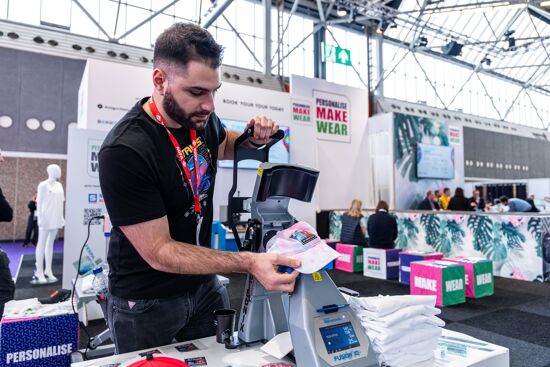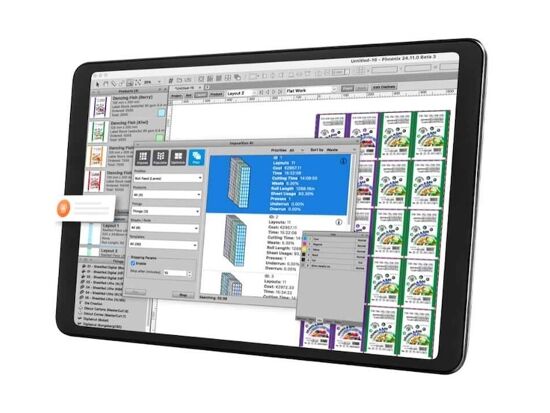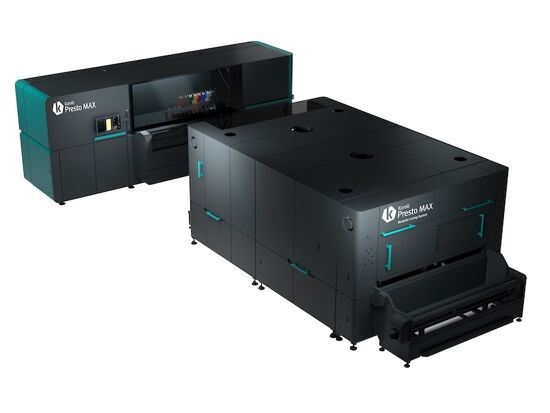Weaving AI into the future of fashion

Thomas Rothery, Fashion-Tech Consultant, Copper Global, has extensive experience working in the fashion industry as a menswear designer for numerous brands, including USC, Berghaus and FILA, where he led the development of metaverse strategy. Now, he’s shifting his focus to future fashion-tech by designing items for digital spaces, exploring their interaction with physical space and consulting brands on how they can tell stories across both spaces – through video games, in particular.
My background in the fashion and technology sectors has led me to be involved with some exciting projects looking at where these intersecting industries are heading, especially in regards to Web3. Web3 is a term used to describe the current and most recent stage of the internet, one with an ownership layer to digital content and one that is communally controlled by its users. It’s a model based on openly verifiable information, rather than a corporation-owned centralised web and generally considered linked to multiple digital spaces and worlds. This contrasts to Web1, which was the first era of the internet, comprising read-only pages providing basic services; and Web2, which offered interactivity in exchange for personal data and was increasingly dominated by a few large platforms.
As a result of Web3, there is higher demand for 3D garments in digital spaces and the prevalence of gaming here sees sportswear as a very relevant component.
Paving the way for 3D design
Elements of my work include facilitating 3D clothing designs for Web3 use.
I am working with a range of companies including a fashion supplier, in partnership with Nottingham Trent University, to develop a B2B 3D design configurator. The goal is to streamline the physical product development workflow and remove weeks from lead times while creating digital twins ready-made for use in games and across marketing channels.
I also work with a 3D product creator platform that runs workshops for brands, facilitating how they can bring their identity into digital spaces. For example, if the brand is presenting a sportswear collection, what virtual spaces will the brand find their sports style-aligned market in? What features of that space give us new creative freedoms to explore? How much should the digital items reflect the physical ones the brand is known for?
There are a number of technologies – some in the pipeline and some already being used in the field – that are making sportswear design and production more efficient, as well as tailored to consumer demand. For example, AI (artificial intelligence) tools that support the sketch to 3D design process, enabling clothing to be drawn by hand and effectively turned it into 3D items. The depiction of items responding to movement, as we well as wear and tear, in virtual spaces can be enhanced by AI too. Solutions like these reduce the number of steps in the design process and improve efficiency.
Another technology that is helping designers to bring sportswear into the digital world is generative manufacturing, which uses a preset series of rules in code or interaction with AI to create and optimise a clothing design based on both brand and customer-defined parameters. Especially in gaming, there’s an exciting opportunity to create personalised avatars, and clothing worn by the avatar could be made into physical items which can in turn be purchased by the user. The process of implementing 3D designs can strengthen brand loyalty by encouraging consumers to think: “This clothing brand is working with a computer game that I love. I can buy their clothing in real life and digital worlds”.
AI is also being used in trend spotting and forecasting for sportswear and fashion overall. For example, a French company called Heuritech has developed a tool that takes tens of millions of images daily from social media to gain insights about fashion at any given time. The solution then uses this data to create a 12-month forecast. A challenge for the fashion industry is that many brands work to 18-month timeframes, so based on this feedback from myself and others they’re currently enhancing the tool to enable it to forecast over longer periods of time.
Embracing AI
AI is already sophisticated enough to support workflows in various fields and we’re currently in a period of transformation. Such tools are causing a level of disruption, but we will soon enter a period where they are accepted as the norm. Therefore, we should lean into AI, embrace the change and get ahead of the curve.
Part of my role involves helping brands to become early adaptors of these new technologies. I typically work with smaller brands because there are less protocols to navigate in order to implement change. Ultimately, the brands that embrace a digital mindset and new technologies sooner will be far more agile in the market, getting ahead of the competition.
At the Sportswear Pro conference, I will speak in a panel discussion about ‘AI. Shaping the Future of Sportswear Manufacturing’, where we will delve deeper into AI’s value for trend and demand forecasting, the potential of generative manufacturing and share success stories of brands embracing AI. We will also explore the effects this has on design and efficiency, as well as associated risks to consider.
See Thomas Rothery participate in the panel session ‘AI. Shaping the Future of Sportswear Manufacturing’ at the Sportswear Pro conference on 21 March, 2024, 15:15 – 15:45 at the RAI Amsterdam, The Netherlands. At the conference, visitors will have the opportunity to learn about manufacturing, production and circularity across the sportswear supply chain. Register here to attend.
Topics
Interested in joining our community?
Enquire today about joining your local FESPA Association or FESPA Direct
Recent news

Special Effects in DTF Will Make Your “Prints” More Memorable
The DTF market is expanding with new vendors and innovations like multi-head printers enabling diverse ink options (spot, neon). Decorative films offer streamlined special effects. Keypoint Intelligence tested metallic and glitter films, noting varied ease of use and wash durability. New technology using adhesive and foil directly promises further creative advancements in DTF.

SmartHub – Expectations, opportunities and why you should attend!
The SmartHub at Personalisation Experience 2025 in Berlin will showcase personalisation and smart production opportunities across industries like textiles. Featuring a Smart Factory Trail with brands like Inkcups and Trotec, and a conference with experts discussing AI, mass customisation, and profit strategies, it offers insights into reducing waste and boosting efficiency through digital methods. Panel sessions will explore growth, automation in textiles, and smart manufacturing.

How is AI revolutionising Large Format Print?
Nessan Clearly discusses how AI in print relies on data pattern matching, already enhancing software for large format providers. He predicts that this will result in increased AI integration in workflow planning, job queue management, colour correction, image upscaling, and predictive maintenance via sensors and vision systems, ultimately streamlining operations and offering greater flexibility.

One Ink for All? Exploring Pigment in Textile Printing
Digital textile printing faces complexity due to diverse substrates requiring specific inks. The industry seeks a universal ink, with pigment ink showing potential. While traditionally for natural fibres, advancements aim to broaden its application, simplify processes by reducing pre/post-treatment, and improve sustainability, though challenges like hand feel on garments remain.